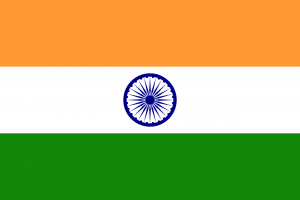Language/Hindi/Vocabulary/Numbers-and-Counting
 Հայերէն
Հայերէն Български език
Български език 官话
官话 官話
官話 Hrvatski jezik
Hrvatski jezik Český jazyk
Český jazyk Nederlands
Nederlands English
English Suomen kieli
Suomen kieli Français
Français Deutsch
Deutsch עברית
עברית Magyar
Magyar Bahasa Indonesia
Bahasa Indonesia فارسی
فارسی Italiano
Italiano 日本語
日本語 Қазақ тілі
Қазақ тілі 한국어
한국어 Lietuvių kalba
Lietuvių kalba Νέα Ελληνικά
Νέα Ελληνικά Şimali Azərbaycanlılar
Şimali Azərbaycanlılar Język polski
Język polski Português
Português Limba Română
Limba Română Русский язык
Русский язык Српски
Српски Español
Español العربية القياسية
العربية القياسية Svenska
Svenska Wikang Tagalog
Wikang Tagalog தமிழ்
தமிழ் ภาษาไทย
ภาษาไทย Türkçe
Türkçe Українська мова
Українська мова Urdu
Urdu Tiếng Việt
Tiếng ViệtLearning the Hindi numbering system is an essential stepping stone in understanding the language. In this lesson, we will master the basics of counting in Hindi and explore different contexts where numbers are used, such as time-telling and expressing quantities.
Hindi numbers
In Hindi, numbers are written in the Devanagari script, consisting of ten basic digits, from zero to nine. Here is a table that shows the Hindi numbers from 1 to 10.
| Hindi | Pronunciation | English |
|---|---|---|
| एक | ek | one |
| दो | do | two |
| तीन | teen | three |
| चार | chaar | four |
| पाँच | paanch | five |
| छह | chhah | six |
| सात | saat | seven |
| आठ | aath | eight |
| नौ | nau | nine |
| दस | das | ten |
Note that Hindi numbers may have different forms based on gender and subject position.
Counting in Hindi
To express a quantity in Hindi, you can simply put the number before the noun or adjective. For example, "three books" would be "तीन किताबें" (teen kitaaben), and "five red flowers" would be "पाँच लाल फूल" (paanch laal phool).
Here are some other examples you can practice with:
- Two apples - "दो सेब" (do seb)
- Seven days - "सात दिन" (saat din)
- Ten rupees - "दस रुपये" (das rupaye)
- Three pens - "तीन कलमें" (teen kalamen)
Telling time in Hindi
In Hindi, to tell the time, you have to use the word "बजे" (baje) which means "o'clock". You can simply say the number of hours followed by "बजे" (baje). For example, "two o'clock" is "दो बजे" (do baje), and "six o'clock" is "छह बजे" (chhah baje).
If you want to indicate the minutes past the hour, you should use the word "मिनट" (minat) for minutes. For example, "five past two" is "दो बजे पाँच मिनट" (do baje paanch minat), and "quarter past six" is "छह बजे पंद्रह मिनट" (chhah baje pandrah minat).
For half-past times, you can use the word "बजकर" (bajkar). For example, "half-past four" is "चार बजकर आधा" (chaar bajkar aadha).
Ordinal numbers
Ordinal numbers are used to indicate the position of an element in a series or sequence. Here are the first ten ordinal numbers in Hindi.
| Hindi | Pronunciation | English |
|---|---|---|
| पहला | pehla | first |
| दूसरा | doosra | second |
| तीसरा | teesra | third |
| चौथा | chautha | fourth |
| पाँचवा | paanchwa | fifth |
| छठा | chhatha | sixth |
| सातवा | saatwa | seventh |
| आठवा | athwa | eight |
| नौवाँ | nauwan | ninth |
| दसवाँ | daswan | tenth |
Ordinal numbers are formed by suffixing "-वा" (-wa) to the cardinal number, except for "first", which is "पहला" (pehla). For example, "third day" is "तीसरा दिन" (teesra din), and "fifth floor" is "पाँचवीं मंज़िल" (paanchwi manzil).
Conclusion
In this lesson, we have introduced the basics of counting in Hindi and explored different contexts where numbers are used. Practicing counting in Hindi is essential for expanding your vocabulary and improving your language skills.
Sources
- Hindi Numbers: How to Count in Hindi
- Fiji Hindi/Vocabulary/Numbers - Wikiversity
- Hindi Numbers Counting from 1-10 with English pronunciation ...
Videos
Learn hindi numbers 1 to 100 - YouTube
Hindi Counting 1 to 20 | Learn Hindi Numbers | Hindi Words in ...
Learn Hindi - Hindi in Three Minutes - Numbers 1-10 - YouTube
how to write hindi numbers 1 to 100 in words - YouTube
Related Lessons
- Arabic Loan Words in Hindi
- Food
- Flowers
- Parts of the Body
- Geography
- Bedroom
- How to Say Good Bye
- Portuguese Loan Words in Hindi
- Idiomatic Expressions
- Numbers

